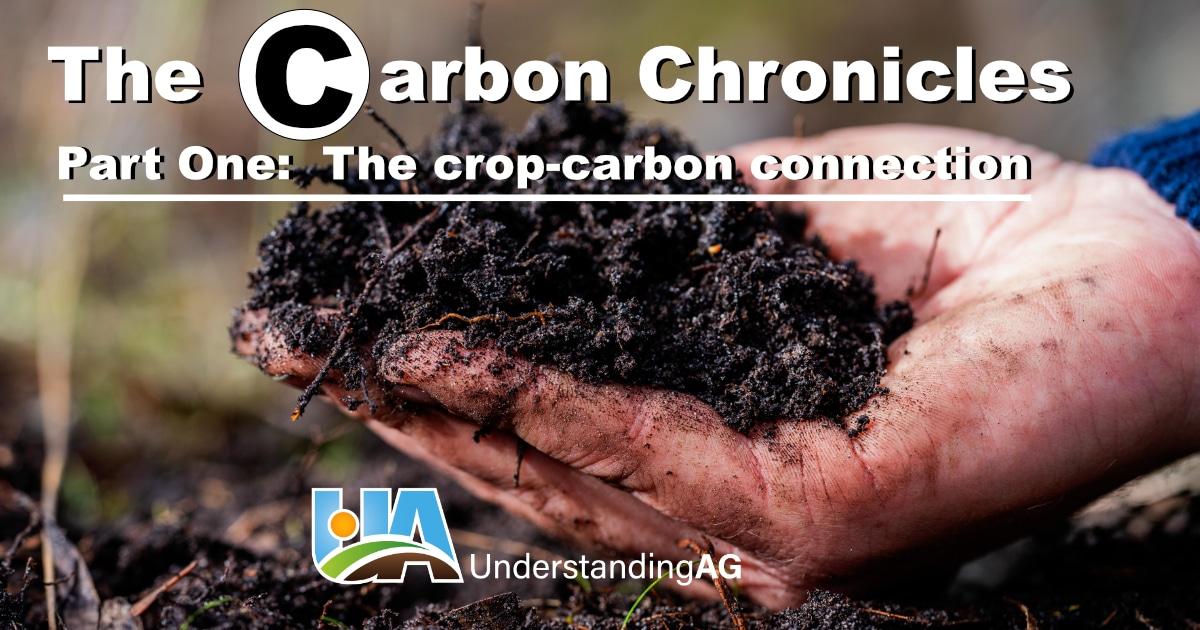
In soil I lie, a secret unseen,
A cornerstone of life, in every green.
With humble microbes, a dance serene,
In Earth's embrace, my role is keen.
In the ground I dwell, unseen but grand,
A vital link in life’s command.
With microbes and roots, a partnership planned,
In the soil I'm hidden, yet readily at hand.
From forest floors to fields so wide,
I'm in the roots where plants provide.
In life’s cycles, a constant guide,
Guess who am I, in the soil I hide?
Carbon. It’s everywhere, and you hear about it all the time if you are involved in agriculture. But have you ever thought about why carbon is so important to us? I wrote the riddle above with a little (okay a lot of) help from ChatGPT in a whimsical attempt to provoke some thought about this question.
Carbon is the building block of life. Every living and formerly living thing has carbon as part of its makeup. Globally, carbon cycles in timescales reaching tens of millions of years, from the atmosphere to deep in the earth’s crust and back again, with many temporary stops along the way. These shorter layovers where carbon cycles through plants, animals, and soil are fundamentally important for food production.
Carbon is unique, because it has the ability to form bonds with a vast number of different elements, and also with itself. Hydrocarbons like coal, oil, and natural gas that we burn for energy are just carbon and hydrogen atoms arranged in rings or chains of varying length. Carbon performs the same function in soil. It is the energy (food) source that powers microbial activity. Microbial activity in the soil is the engine that drives everything from nutrient cycling to decomposition to water purification. This microbial action creates the glues that build soil aggregates, and soil aggregates are the building blocks for healthy, well-functioning soil.
Carbon has been described as the “currency” of the soil. It is the unit of exchange that enables the biological community to function. Plants take in carbon from CO2 in the atmosphere and convert that carbon to various types of sugars and other compounds. Some of those sugars are traded with microbes in the soil in the form of root exudates. In exchange, the community of bacteria and other soil organisms cycle nutrients and make them available for plant uptake. Mycorrhizal fungi are particularly important partners that tap directly into plant roots and deliver nutrients and water in exchange for the carbon they need to survive.
Other sources and forms of carbon also play a role in this underground economy. Soil organic matter is a catch-all term that describes everything from decomposing residue to humic substances to thin films of carbon compounds stuck to soil particles to sticky proteins that glue soil aggregates together. Organic matter is about 50% carbon on average. It serves as a critical buffer for physical, chemical, and biological stability in the soil. Generally, the more organic matter a soil has, the greater its capacity to store and supply nutrients and water. Low organic matter soils are less productive and usually less profitable to farm.
Think of organic matter as a “savings account” in the soil, whereas root exudates are more like cash flow that funds the checking account for everyday transactions. If there is extra cash in the checking account, it can be put towards savings for a rainy day. Microbes can use all forms of organic matter as an energy source. If the checking account runs dry, they will tap into the savings account to get their food. Without a continual influx of carbon, the biological community in the soil suffers, just like your community would suffer if the grocery store shelves were running empty. Without food to eat, productivity declines and the community can no longer perform essential functions that support plant growth.
Carbon must continually cycle through the soil via root exudates and decomposing residue to maintain the checking and savings accounts. If the cycle slows, organic matter levels will decline as the microbes eat through their cash reserves. Farmers and ranchers then eat through their own cash reserves buying expensive inputs to try to replace the lost soil function and productivity. Think of carbon as the cash cow that drives farm and ranch profit. If you invest in cycling more carbon through your soil, you will be paid many dividends in the long run.
In part 2 of this series, we will dig into the details of where this “cash flow” of carbon comes from, where it goes, and how it all works at the field scale
